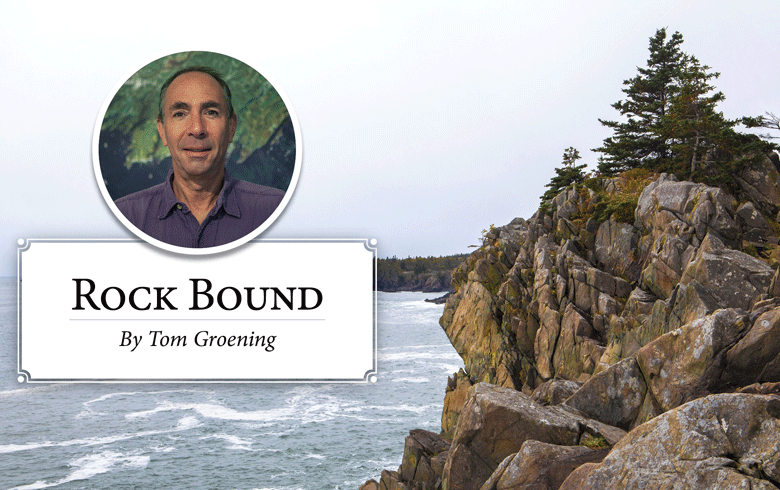I just learned that our world’s oceans have their own day, and it’s June 8, the day I am writing this column. But I want to bring us closer to home.
For our 2021 Island Journal publication, which prints soon after this newspaper begins circulating, I wrote about Penobscot Bay, one of three stories we featured this year on “great bays,” the other two being the Chesapeake and Narragansett.
Even though I live, work, and recreate on its water and along its shores, I think I take the size, character, and ecological and cultural history of Penobscot Bay for granted. Reflecting on its superlatives and history, I’ve come to a renewed appreciation for it.
Those who care about the Chesapeake could only envy what Penobscot Bay enjoys…
It is the largest bay in Maine, and its watershed drains about a third of the state’s land mass. When Europeans arrived, it was rich with fish. And it remained that way into the early 20th century, though you could no longer catch cod in the upper reaches of the bay, and that fish density, decade by decade, declined, north to south. A good part of Pen Bay’s productivity is tied to its circulatory patterns and the nutrients and fish that come from the river of the same name.
One of the wonderful benefits of my job is that I get to speak with very smart people and plumb their thoughts. For the Pen Bay story, I spoke to Bob Steneck, a University of Maine professor who does research at the Darling Marine Center, and he explained the circulatory patterns, which have tides going clockwise—if Searsport is at the top of the clock face—around Islesboro.
I also spoke to Paul Anderson, director of the Maine Center for Coastal Fisheries. One of his observations that sticks with me—and which didn’t make it into the final story—is that those who care about the Chesapeake could only envy what Penobscot Bay enjoys—clean water, somewhat stable fisheries, and working waterfront access.
I also interviewed Robin Alden—founder of Commercial Fisheries News, founder of Maine Center for Coastal Fisheries, and former DMR commissioner—and her husband Ted Ames, a legendary figure whose expertise in fisheries management seems to draw equally from research and first-hand and family fishing experience.
In our conversation, two themes emerged. The rise of technology in fishing—equipment that better allowed fishermen to harvest large quantities—was always one step ahead of regulations. The other theme is that management needs to consider fish nursery habitat, how those habitats may be different from cove to cove, and how and when fish are caught during their life cycle.
In other words, more scalpel, less chainsaw.
David Gelinas is president of the Penobscot Bay & River Pilots, and he talked about how cargoes delivered on tankers have changed over 30 years, and an often-overlooked facet of the bay—its deep-water port in Searsport.
Long-time lobsterman Dave Cousens is very much a citizen scientist, and his tracking of water temperature and lobster shedding makes an indisputable point—the bay is warming and there are resource impacts that follow. The biggest impact is, of course, the dominance of lobster.
I’ve long been fond of driving from my home in Belfast to the eastern shore of Penobscot Bay and visiting Castine, Brooksville, Brooklin, Deer Isle, and Stonington. Those towns, my sources confirmed, don’t see their fates as intertwined with Camden, Rockland, and Port Clyde. What’s missed is the opportunity for a large bloc of communities to speak with one, powerful voice.
And a final theme is change. From cod, herring, and mackerel; to granite; to lobster; and now to land-based salmon farms in Bucksport and Belfast, the bay offers lucrative extraction opportunities. A newly identified resource is wind. Can its energy be harvested responsibly and without disrupting existing activities? That story is still unfolding.
Tom Groening is editor of The Working Waterfront and Island Journal. He may be contacted at tgroening@islandinstitute.org.





